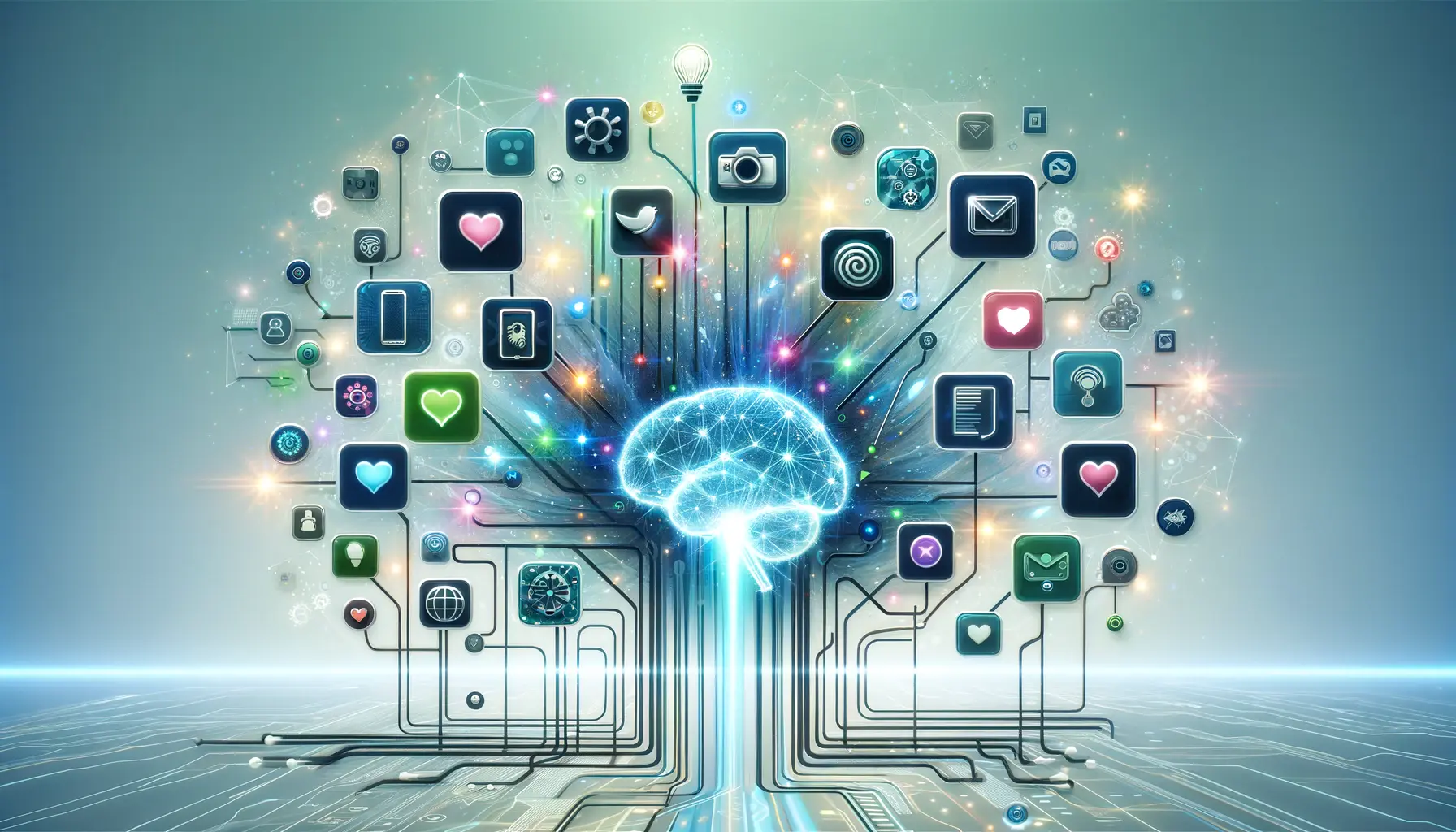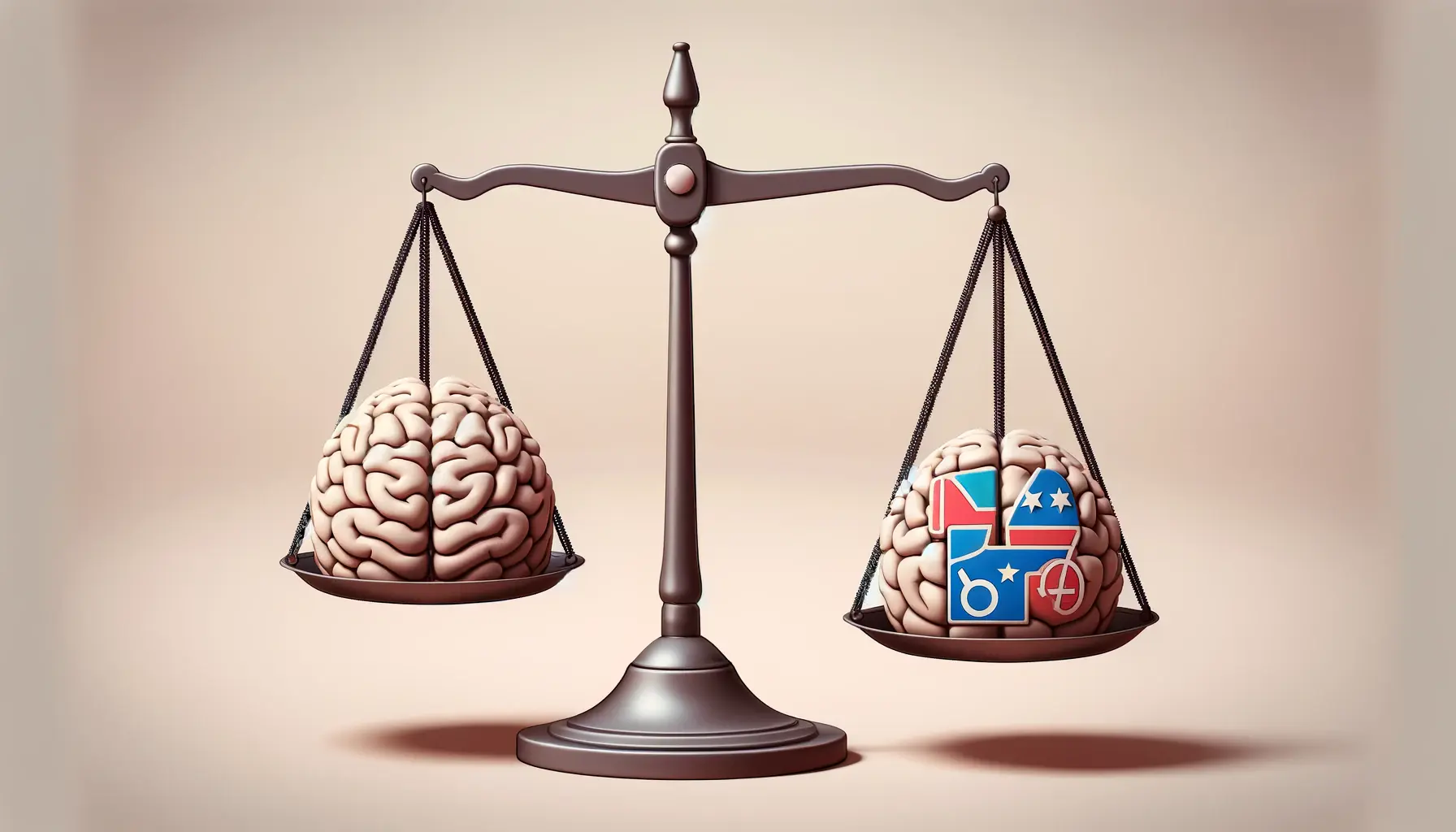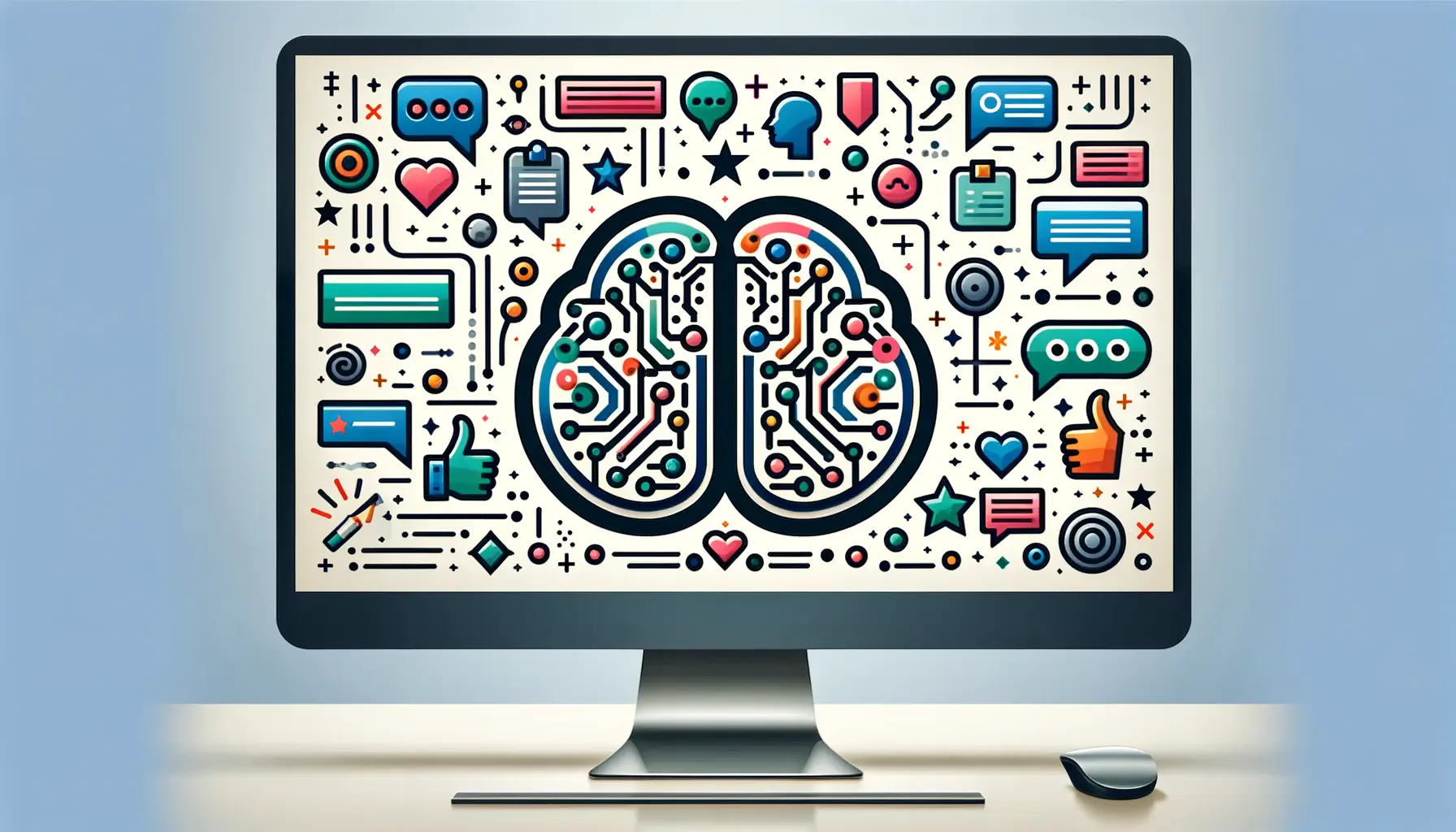The digital age has ushered in a transformative era for news dissemination, with artificial intelligence (AI) playing an increasingly pivotal role.
Among the vanguard of this revolution is Grok AI, a cutting-edge technology that has begun to redefine how news is sourced, analyzed, and shared.
This technology, emerging from the confluence of machine learning and vast data analytics, offers a new perspective on the accessibility and immediacy of news.
Grok AI, named with a nod to the deep understanding and intuitive grasp of information, is not just another tool in the journalist’s arsenal; it represents a paradigm shift in the news industry.
By leveraging AI, news organizations can now process and disseminate information faster than ever before, ensuring that the public stays informed with up-to-the-minute accuracy.
The implications of this are profound, touching on aspects of reliability, speed, and even the very nature of what we consider to be newsworthy.
- The Evolution of News Through AI
- Personalization and User Engagement
- Challenges and Ethical Considerations
- Impact on Journalism and Newsrooms
- Future Trends in AI and News
- Global Impact and Accessibility
- Collaboration and the Future of News
- Embracing the AI Revolution in News Dissemination
- Grok AI in News Dissemination: FAQs
The Evolution of News Through AI
From Print to Digital: A Brief History
The journey from the traditional print press to the digital newsrooms of today has been marked by continuous innovation.
The advent of the internet and digital platforms transformed how news was consumed, leading to the rise of online news portals and social media as primary news sources.
However, the integration of AI like Grok has taken this transformation a step further, automating the curation and distribution of news content to cater to the personalized preferences of the audience.
This evolution has not only expanded the reach of news but also changed the dynamics of news consumption.
Readers now expect real-time updates and news that aligns with their interests, a demand that traditional newsrooms struggled to meet.
Grok AI, with its ability to analyze vast datasets and identify trends, has emerged as a solution to these challenges, offering tailored news feeds and instant updates on global events.
Enhancing News Accuracy and Speed
One of the most significant impacts of Grok AI in news dissemination is the enhancement of accuracy and speed.
In an era where misinformation can spread rapidly, the ability of AI to verify facts and sources in real-time is invaluable.
Grok AI utilizes complex algorithms to cross-reference information, reducing the risk of fake news and ensuring that the news disseminated is both accurate and reliable.
Moreover, the speed at which news can be delivered has seen a remarkable improvement.
Grok AI’s real-time processing capabilities mean that news organizations can publish stories almost instantaneously, keeping the public informed during critical moments.
This speed, combined with the accuracy provided by AI, has set a new standard for news dissemination, making it possible to stay ahead in the fast-paced world of news.
The integration of Grok AI into newsrooms has revolutionized the way news is sourced, analyzed, and shared, offering unprecedented levels of accuracy and speed in news dissemination.
Personalization and User Engagement
The advent of Grok AI in news dissemination has not only revolutionized the speed and accuracy of news delivery but has also introduced a new era of personalized news consumption.
This technology enables news platforms to tailor content to the individual preferences of their audience, significantly enhancing user engagement and satisfaction.
Personalization through AI involves analyzing user behavior, including past interactions, reading habits, and preferred topics, to curate news content that is most relevant to each user.
This level of customization ensures that readers are more engaged with the content they receive, as it resonates with their interests and preferences.
Key Components of AI-driven Personalization
- User Behavior Analysis: Grok AI examines the digital footprint of users on news platforms, identifying patterns in their reading habits and preferences.
- Content Curation: Based on the analysis, AI algorithms curate a selection of news stories tailored to the interests of each user, ensuring relevance and engagement.
- Feedback Loop: User interactions with the curated content are continuously monitored to refine and improve the personalization process, creating a dynamic and responsive news consumption experience.
Impact on User Engagement
The impact of personalization on user engagement is profound.
By receiving news that is directly relevant to their interests, users are more likely to spend longer periods on news platforms, interact with the content, and return frequently.
This not only enhances the user experience but also benefits news organizations by increasing readership and loyalty.
Furthermore, personalized news feeds help in combating information overload, a common issue in the digital age.
By filtering out irrelevant content, Grok AI ensures that users are not overwhelmed, making it easier for them to stay informed without having to sift through vast amounts of data.
The implementation of Grok AI for personalized news dissemination represents a significant leap forward in how news is consumed, offering a tailored, engaging, and efficient experience for users worldwide.
Challenges and Ethical Considerations
While the integration of Grok AI into news dissemination processes offers numerous benefits, it also presents several challenges and ethical considerations.
The reliance on AI for news curation and distribution raises questions about bias, privacy, and the potential for manipulation, necessitating a careful examination of these technologies.
One of the primary concerns is the inherent bias in AI algorithms.
These biases can stem from the datasets used to train the AI, potentially leading to skewed news representation and amplification of certain viewpoints over others.
Addressing this issue requires transparent and diverse data sources to ensure balanced news dissemination.
Addressing AI Bias
- Data Diversity: Ensuring that the datasets used to train Grok AI are diverse and representative of different perspectives to mitigate bias.
- Algorithmic Transparency: Making the algorithms’ decision-making processes more transparent, allowing for scrutiny and adjustments to reduce bias.
- Continuous Monitoring: Regularly reviewing the AI’s output to identify and correct any biases that may emerge over time.
Privacy and Data Security
The personalization capabilities of Grok AI rely heavily on user data, raising significant privacy and data security concerns.
Protecting user information while providing personalized news content requires robust data protection measures and transparent data usage policies.
Ensuring user privacy involves encrypting user data, obtaining explicit consent for data collection and usage, and providing users with control over their data.
These steps are crucial in maintaining trust between news platforms and their audience.
Potential for Manipulation
Another challenge is the potential for AI-driven news platforms to be manipulated for spreading misinformation or propaganda.
The speed and automation of AI can be exploited to disseminate false information rapidly, making it imperative to implement safeguards against such misuse.
Combating this risk involves deploying fact-checking algorithms alongside Grok AI, establishing partnerships with reliable news sources, and creating mechanisms for users to report suspicious content.
These measures can help maintain the integrity of news dissemination in the AI era.
While Grok AI brings innovation to news dissemination, addressing its challenges and ethical considerations is essential for harnessing its full potential responsibly.
Impact on Journalism and Newsrooms
The integration of Grok AI into the news dissemination process has a profound impact on journalism and the operation of newsrooms.
This technology is not only changing how news is distributed but also how it is gathered and reported, signaling a shift towards a more data-driven approach to journalism.
AI technologies like Grok are enabling journalists to analyze large datasets, uncover patterns, and identify stories that might have been overlooked.
This capability enhances investigative journalism, allowing reporters to delve deeper into complex issues with the support of data analytics.
Enhancing Investigative Journalism
- Data Analysis: Journalists can use Grok AI to sift through vast amounts of data, identifying trends and anomalies that could indicate newsworthy stories.
- Pattern Recognition: AI’s ability to recognize patterns within data can uncover connections and insights, providing journalists with leads for in-depth investigations.
Automating Routine Tasks
Beyond investigative journalism, Grok AI is automating routine tasks in newsrooms, such as transcribing interviews, monitoring news feeds for breaking stories, and even generating initial drafts of reports.
This automation allows journalists to focus on more complex and creative aspects of their work, such as storytelling and analysis.
The automation of these tasks is not without its challenges, particularly concerning the potential for job displacement.
However, by augmenting journalists’ capabilities, AI can also create new roles and opportunities within the news industry, centered around data analysis, AI management, and personalized content curation.
Transforming Newsroom Dynamics
The adoption of AI like Grok is transforming the dynamics of newsrooms, encouraging collaboration between journalists and technologists.
This collaboration is essential for navigating the ethical and practical challenges of using AI in journalism, ensuring that technology enhances rather than undermines journalistic integrity.
Moreover, the real-time capabilities of AI-driven tools are pushing newsrooms towards a more agile and responsive model of journalism.
This model prioritizes speed and accuracy, leveraging AI to provide up-to-the-minute news coverage that keeps pace with the digital world’s demands.
Grok AI is reshaping journalism, from enhancing investigative reporting to automating routine tasks, thereby transforming newsrooms into more efficient and data-driven environments.
Future Trends in AI and News
The intersection of AI and news dissemination is poised for further evolution, with emerging trends indicating a future where news consumption becomes even more personalized, interactive, and immersive.
Grok AI, at the forefront of this transformation, is just the beginning of a journey towards a fully integrated AI news ecosystem.
As technology advances, we can anticipate the development of more sophisticated AI systems capable of generating not just personalized news feeds but also creating content that adapts to the changing interests and contexts of its audience.
This evolution will likely redefine the boundaries between creators and consumers of news.
Immersive News Experiences
- Virtual Reality (VR) and Augmented Reality (AR): Future AI technologies could integrate with VR and AR to provide immersive news experiences, allowing users to explore news stories in a three-dimensional environment.
- Interactive Storytelling: AI-driven platforms may offer interactive news stories, where users can choose different paths to explore various aspects and perspectives of a story.
AI as News Creators
The potential for AI to act not only as curators but also as creators of news content is a trend that is gaining traction.
Advanced AI systems could automate the creation of certain types of news content, such as reports on financial earnings or sports results, freeing human journalists to focus on more complex narratives.
However, the rise of AI as news creators also raises ethical questions about authenticity, accountability, and the role of human oversight in ensuring the accuracy and integrity of AI-generated content.
Navigating these challenges will be crucial for maintaining public trust in AI-driven news.
Enhanced Fact-Checking and Verification
Another significant trend is the use of AI for enhanced fact-checking and verification processes.
As misinformation becomes increasingly sophisticated, AI tools will become more adept at identifying and flagging false information, using advanced algorithms to analyze the veracity of content across the web.
This capability will be instrumental in upholding the accuracy of news dissemination, ensuring that the public has access to reliable information.
By automating the fact-checking process, AI can provide a powerful defense against the spread of misinformation.
The future of AI in news points towards more immersive, interactive, and accurate news consumption experiences, with AI playing a central role in both curating and creating content.
Global Impact and Accessibility
The proliferation of AI technologies like Grok in news dissemination is not confined to any single region or demographic; it has a global impact, significantly enhancing the accessibility of news across the world.
This democratization of information has the potential to bridge knowledge gaps and foster a more informed global citizenry.
By leveraging AI, news organizations can overcome language barriers and cultural differences, tailoring content to meet the diverse needs of a global audience.
This capability not only expands the reach of news outlets but also ensures that individuals, regardless of their location or background, have access to timely and relevant news.
Breaking Down Language Barriers
- Real-time Translation: AI-driven tools can provide real-time translation of news content, making stories accessible to non-native speakers and promoting cross-cultural understanding.
- Localized Content: Beyond translation, AI can curate news content that resonates with local interests and concerns, fostering a deeper connection with the audience.
Enhancing News Literacy
Another critical aspect of AI’s global impact is its potential to enhance news literacy.
By curating content that is not only accessible but also informative and engaging, AI can play a pivotal role in educating the public about critical issues, from climate change to global health crises.
Furthermore, AI-driven platforms can incorporate educational tools and resources to help users critically evaluate news sources, discerning between credible information and misinformation.
This educational approach can empower individuals to navigate the complex media landscape more effectively.
Challenges in Global News Accessibility
Despite the potential for increased accessibility, there are challenges to ensuring equitable access to AI-curated news.
Digital divides, such as disparities in internet access and technological literacy, can limit the reach of AI-driven news platforms, particularly in underserved regions.
Addressing these challenges requires a concerted effort from technology developers, news organizations, and policymakers to invest in infrastructure, education, and policies that promote inclusivity and accessibility in the digital news ecosystem.
Assuming that AI-driven news dissemination automatically leads to global inclusivity overlooks the significant challenges that must be addressed to ensure equitable access to information.
Collaboration and the Future of News
The trajectory of AI in news dissemination suggests a future where collaboration between AI developers, journalists, news organizations, and the public becomes increasingly vital.
As Grok AI and similar technologies continue to evolve, fostering partnerships will be key to leveraging AI’s full potential while navigating its ethical and practical challenges.
This collaborative approach can lead to the development of more sophisticated AI systems that are transparent, accountable, and aligned with journalistic values.
Moreover, it can ensure that AI serves the public interest, enhancing the quality and accessibility of news worldwide.
Building Ethical AI Frameworks
- Stakeholder Engagement: Involving journalists, ethicists, and the public in the development of AI to ensure that these technologies respect privacy, ensure accuracy, and promote diversity.
- Standards and Guidelines: Establishing industry-wide standards and ethical guidelines for AI in news, including transparency in AI operations and safeguards against bias.
Empowering Journalists with AI
Collaboration between AI developers and journalists is crucial for empowering the latter with tools that augment their capabilities without compromising journalistic integrity.
Training programs and resources can help journalists understand and utilize AI technologies effectively, leading to enhanced reporting, storytelling, and investigative journalism.
Moreover, AI can assist journalists in managing the increasing volume of data and information, enabling them to focus on analysis, interpretation, and crafting compelling narratives that engage and inform the public.
Engaging the Public in AI-driven News
Public engagement is essential for the successful integration of AI in news dissemination.
By involving the audience in the development and evaluation of AI-driven news platforms, news organizations can ensure that these technologies meet the needs and expectations of their users.
Feedback mechanisms, user forums, and participatory design processes can help tailor AI applications to enhance the news consumption experience, fostering a sense of community and trust between news providers and their audience.
The future of news lies in the synergy between AI technologies, journalistic expertise, and public engagement, creating a news ecosystem that is more inclusive, informative, and interactive.
Embracing the AI Revolution in News Dissemination
The integration of Grok AI into the news dissemination process marks a significant milestone in the evolution of journalism and media.
As we stand on the brink of this technological revolution, it’s clear that AI has the potential to transform the news industry in unprecedented ways.
From enhancing the accuracy and speed of news delivery to personalizing content for individual users, AI like Grok is redefining the landscape of news consumption.
The Path Forward: Navigating Challenges and Opportunities
However, this journey is not without its challenges.
The ethical considerations and potential biases inherent in AI technologies present obstacles that must be carefully navigated.
Ensuring the responsible use of AI in news dissemination requires a collaborative effort among developers, journalists, and the public to establish ethical guidelines and maintain transparency.
- Developing AI systems that prioritize accuracy and objectivity over sensationalism.
- Implementing robust privacy protections to safeguard user data.
- Creating inclusive technologies that serve diverse global audiences.
Fostering Collaboration for a Brighter Future
The future of news dissemination, powered by AI, promises a more informed and engaged global citizenry.
By fostering collaboration between technology and journalism, we can leverage AI to not only streamline news operations but also to deepen our understanding of the world.
Grok AI, with its advanced capabilities, is just the beginning of what promises to be an exciting journey towards a more dynamic and interactive news ecosystem.
In conclusion, as we embrace the AI revolution in news dissemination, we must remain vigilant about the challenges it presents.
By working together to address these issues, we can unlock the full potential of AI like Grok to create a news landscape that is more accurate, engaging, and accessible for all.
The integration of AI into newsrooms is not just a technological upgrade but a commitment to enhancing the democratic process by ensuring that every individual has access to reliable and timely information.
Grok AI in News Dissemination: FAQs
As Grok AI reshapes the landscape of news dissemination, many are curious about its capabilities, implications, and future. Here are some frequently asked questions to shed light on this innovative technology.
Grok AI is an advanced artificial intelligence developed to enhance news dissemination by analyzing, curating, and personalizing news content for users in real-time.
By analyzing user behavior and preferences, Grok AI curates news feeds tailored to individual interests, enhancing engagement and satisfaction.
Yes, through sophisticated fact-checking algorithms and cross-referencing sources, Grok AI aims to reduce misinformation in news dissemination.
Concerns include potential biases in AI algorithms, privacy issues related to user data, and the need for transparency in AI’s news curation process.
Grok AI automates routine tasks, supports investigative journalism with data analysis, and fosters a more data-driven approach to reporting.
Emerging trends include immersive news experiences through VR/AR, AI as news creators, and enhanced fact-checking to combat misinformation.
By breaking down language barriers and curating localized content, Grok AI aims to make news more accessible to a global audience.
The future emphasizes collaboration between AI developers, journalists, and the public to ensure ethical, transparent, and effective news dissemination.













